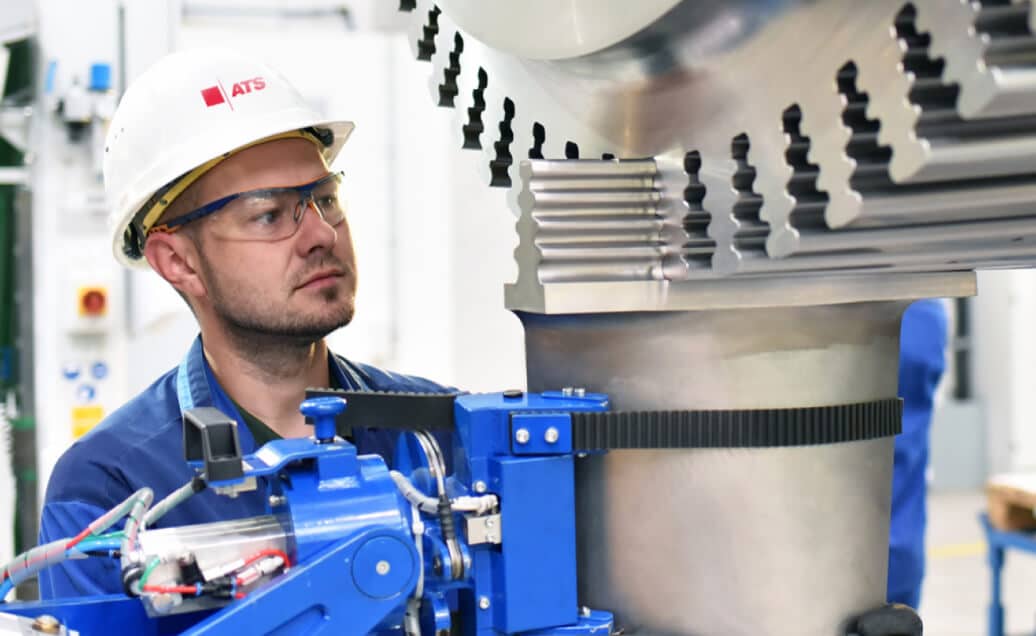A carefully considered preventive maintenance plan can make a positive impact on several areas of your business — improved machinery operation, more efficient output, higher production quality, longer equipment life, increased uptime and more.
The most successful preventive maintenance procedures take a multipronged approach to address potential machinery quality and performance issues before they even occur. Below, you’ll find 10 preventive maintenance tips that can help you tailor a plan to avoid unplanned downtime caused by a machine breakdown.
1. Assess the current state — Before starting any new maintenance plan, it’s always a good idea to conduct a baseline assessment of your facility and equipment. This will provide a big-picture view of your facility that will help guide your actions and decisions. Consider the number, age and types of machines, the OEMs of your machinery, the overall production chain within your facility, the level of automation and any notable historical maintenance issues — either one-time or recurring. Once you’ve taken the big picture into account, think about the strengths and weaknesses of your facility’s current state and decide where you’d like to focus on improving maintenance and performance.
2. Review manufacturer specs — Once you’ve assessed your facility and machinery, it’s time to start doing research. This is certainly not the most satisfying part of the process (which would be seeing the results of your preventive maintenance plan), but it’s a major step in getting there. Manufacturer documentation and specs can help you identify the recommended best maintenance practices for your machinery, which will be a major piece of the plan you develop.
3. Documentation is key — Documentation is an important component of any good maintenance plan. In general, you’ll want to document as much as you can, including the current state of your facility, your newly created maintenance plan and the actions you take in pursuit of that plan. As you develop your preventive maintenance plan, comprehensive documentation serves several purposes: it helps you keep track of the work you’ve done so far, creates a single dependable resource for the maintenance practices you enact, and allows employees to easily access and review the plan. All these factors will contribute to positive results.
4. Train and retrain — Your preventive maintenance plan won’t go anywhere without your employees. It’s essential that they’re able to be active, effective participants in your facility’s preventive maintenance plan. Give them the tools to do so by creating a dedicated training program to communicate established PM practices. And make sure it’s not a one-time deal — retraining should occur whenever new practices are enacted, as well as at regular intervals.
5. Pursue buy-in — Preventive maintenance sometimes has a bad reputation among facility owners and employees. It can be seen as a practice that lowers productivity, increases unnecessary downtime and creates extra work. Communicate to your employees that preventive maintenance is a key aspect of their jobs and an important factor in the success of the facility because it actually improves overall productivity and reduces the need for more costly reactive maintenance down the line.
6. Set goals and benchmarks — Working from the big-picture assessment you undertook in the first tip, it can be very useful to set facility goals for uptime, productivity, quality and more. Periodically comparing incremental improvements with your starting point can help motivate you and your employees as you see the results of your efforts.
7. Take a “before picture” — In pursuit of the above, it can be useful to take a metaphorical snapshot of the initial performance metrics of your facility when you begin your new maintenance plan. Making it easy for you and your employees to review this data will put a strong focus on your results.
8. Track progress — While your goals and benchmarks may be in the form of one-year, three-year and five-year plans, you should also ensure that you and your employees can see more incremental results. Using the machine data you have on hand, be sure to check in regularly to celebrate improvements that are occurring on a monthly or even weekly basis.
9. Investigate technology options — Automation and performance data tracking tools are more powerful and commonplace than ever. Even if you aren’t interested in sourcing and installing new sensors and other equipment, you can take steps such as using existing CMMS data in a more deeply analytical way.
10. Review and modify as necessary — Your first (or second or third) preventive maintenance plan shouldn’t be your last one. If something in the plan doesn’t work, don’t hesitate to change it. If you have data to back up your modifications, continuous improvement can never be frowned upon. A good preventive maintenance plan and practice should be able to easily adapt and respond to the needs of your facility.
With these tips in mind, you’re now ready to create — or modify — an effective preventive maintenance plan for your operation. For help implementing a preventive maintenance plan at your organization, contact ATS.


